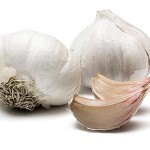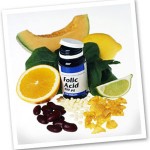Hypertension, or high blood pressure, affects about one in three U.S. adults, according to the Centers for Disease Control, and 25 percent of American adults have prehypertension. Although you can soon be one of the millions of people who must rely upon the daily use of medications to keep their blood pressure under control, I always believed that it is better to be proactive and try to prevent the need for expensive drugs that come with a list of side-effects of their own. Here are 8 tips you can use as preventative measures against high blood pressure. Or, if you already suffer from it, incorporate them and work with your doctor to reduce the medications you need!
1. Coenzyme Q10 (CoQ10)
One double-blind, placebo-controlled study gave a group of hypertensive men and women 60 mg of CoQ10 each day, and gave a control group a placebo. The patients taking CoQ10 had an average drop of 17.8 mmHg in their systolic blood pressure when compared to those not taking the nutrient, a better result than using combinations of prescription drugs. And a study at the University of Western Australia found those taking 100 mg of CoQ10 twice a day reduced systolic and diastolic pressure (6.1 mmHg and 2.9 mmHg respectively) when compared to those not taking CoQ10.
2. Garlic
 Many studies have shown garlic lowers blood pressure. Garlic that has been aged for up to a year after being extracted is the most common form of garlic used in experimental studies. A team of researchers at Adelaide University in South Australia reviewed 11 studies examining the link between garlic and high blood pressure and found significant decreases in blood pressure levels of the patients who consumed garlic. The decreases were greatest in those whose blood pressure was the highest. In some cases, garlic got results as good as prescription drugs. The daily amount of allicin (the active ingredient in garlic responsible for its health benefits) used in most studies was no more than the amount found in one small clove.
Many studies have shown garlic lowers blood pressure. Garlic that has been aged for up to a year after being extracted is the most common form of garlic used in experimental studies. A team of researchers at Adelaide University in South Australia reviewed 11 studies examining the link between garlic and high blood pressure and found significant decreases in blood pressure levels of the patients who consumed garlic. The decreases were greatest in those whose blood pressure was the highest. In some cases, garlic got results as good as prescription drugs. The daily amount of allicin (the active ingredient in garlic responsible for its health benefits) used in most studies was no more than the amount found in one small clove.
3. Hawthorn
Hawthorn is a traditional herbal remedy for high blood pressure. In a randomized, controlled British clinical trial, eighty patients took either 1,200 mg of hawthorn extract daily or a placebo for 16 weeks. And the end of the study, diastolic blood pressure of the hawthorn group was reduced a significant 2.6 mmHG. “The blood pressure lowering effect in this study was real,†study leader Ann F. Walker, Ph.D., said in a statement.
4. Folic acid (folate)
 A type of B vitamin, folic acid helps lower blood levels of the amino acid homosysteine. One study of more than 9,000 Americans found that those who had the highest daily intake of folic acid (400 mcg) lowered their risk of stroke 79 percent when compared to those people who consumed the least (100 mcg) amount of folic acid. Some foods high in folic acid include cereal, whole wheat tortillas, bread, and pasta, lentils, black-eyed peas, and sunflower seeds.
A type of B vitamin, folic acid helps lower blood levels of the amino acid homosysteine. One study of more than 9,000 Americans found that those who had the highest daily intake of folic acid (400 mcg) lowered their risk of stroke 79 percent when compared to those people who consumed the least (100 mcg) amount of folic acid. Some foods high in folic acid include cereal, whole wheat tortillas, bread, and pasta, lentils, black-eyed peas, and sunflower seeds.
5. Fish oil
Multiple human trials have shown that the omega-3 fatty acids found in fish oil reduce blood pressure. Omega-3 fish oil contains both DHA (docosahexanoic acid) and EPA (eicosapentaenoic acid), but DHA may be more beneficial than EPA. WebMD recommends taking a maximum of no more than 3 grams of fish oil daily. The American Heart Association recommends eating fatty fish, such as tuna, mackerel, or salmon, at least twice a week.
6. Quercetin
In a study published in the Journal of Cardiovascular Pharmacology, the flavonoid quercetin significantly lowered the blood pressure of individuals sensitive to salt. In fact, quercetin not only lowered their blood pressure better than a commonly used antihypertensive drug but also prevented enlargement of the heart, which is a major complication of high blood pressure. An additional study found that quercetin prevented kidney damage associated with hypertension. Food sources include apples, citrus fruits, parsley, onions, tea, and red wine.
7. Diet
High blood pressure is more common in people who are overweight or obese, and a change in diet is essential in lowering blood pressure naturally. The DASH (Dietary Approaches to Stop Hypertension) diet is approved by the National Institutes of Health (NIH). It includes beans, fruits and nuts, and low-fat dairy foods, and sodium is limited to 2,400 mg each day. By changing your diet and losing weight, you may be able to reduce — or eliminate — medications used to control high blood pressure.
8. Exercise
 Getting enough exercise can lower your risk of developing high blood pressure by 20 percent to 50 percent. Even light exercise, if done on a consistent basis, can be effective. The Mayo Clinic recommends at least 30 to 60 minutes of exercise each day to help prevent, or to control, high blood pressure. But becoming a “weekend warrior†and cramming all of your weekly activity into the weekends could be dangerous.
Getting enough exercise can lower your risk of developing high blood pressure by 20 percent to 50 percent. Even light exercise, if done on a consistent basis, can be effective. The Mayo Clinic recommends at least 30 to 60 minutes of exercise each day to help prevent, or to control, high blood pressure. But becoming a “weekend warrior†and cramming all of your weekly activity into the weekends could be dangerous.
